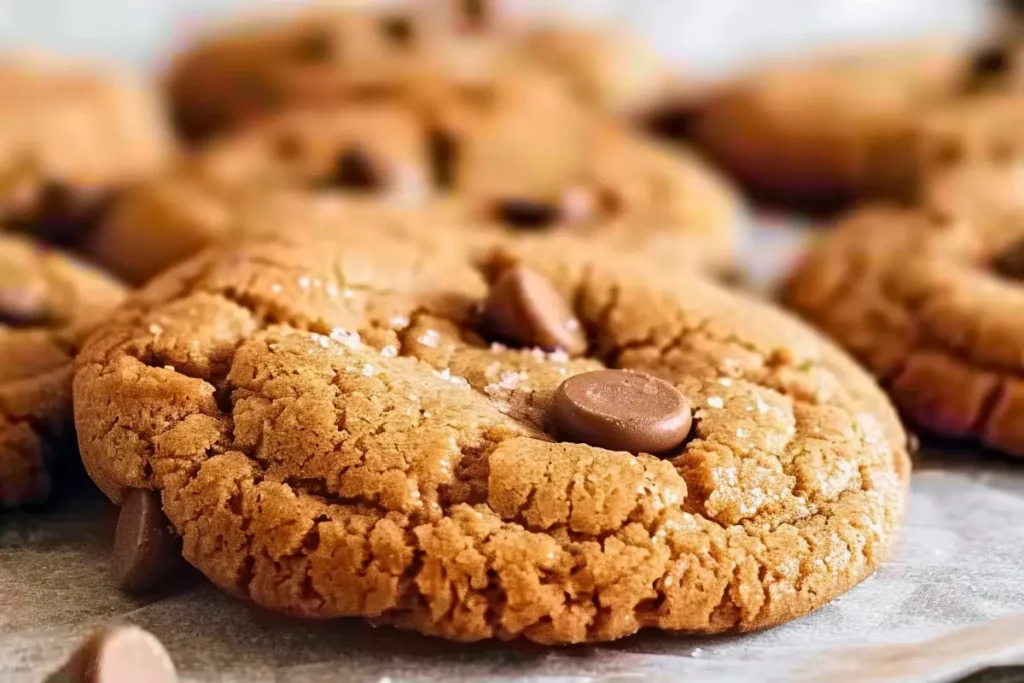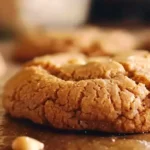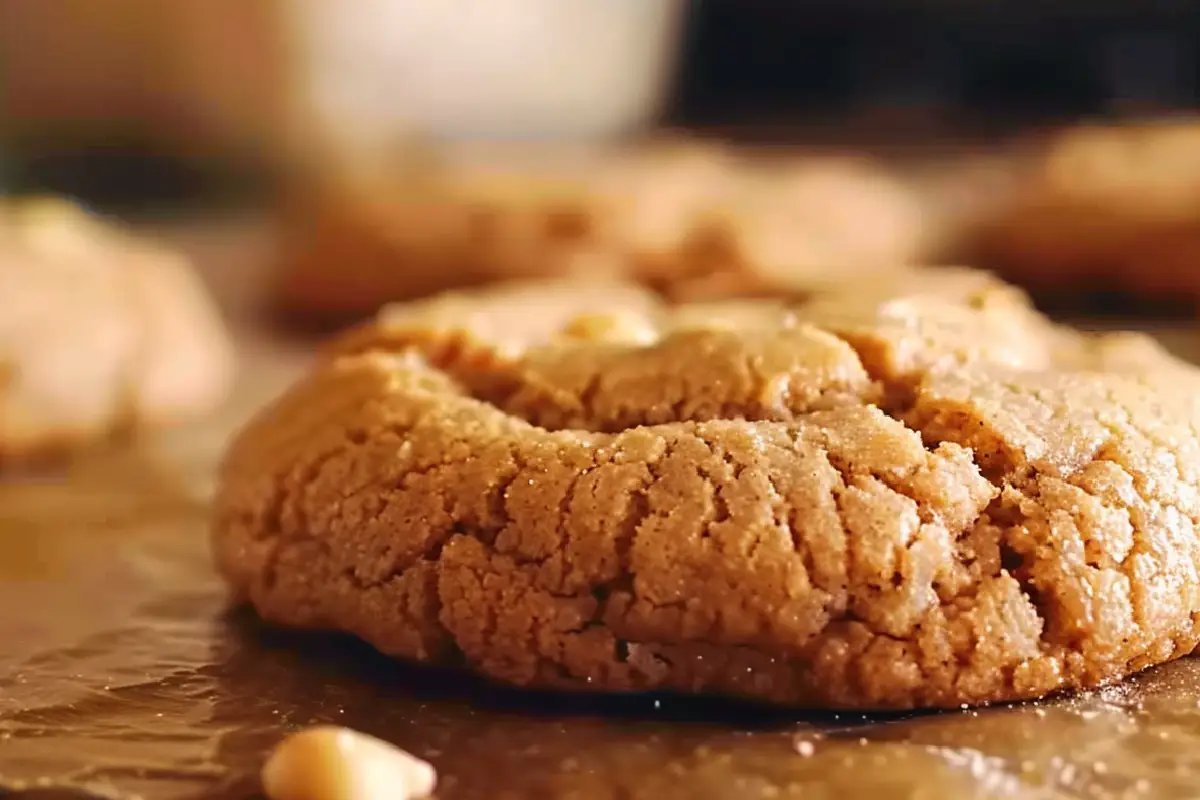Table of Contents: Ingredients in 3 Ingredient Peanut Butter Cookies
Introduction: Ingredients in 3 Ingredient Peanut Butter Cookies
Who knew something as simple as peanut butter could transform into soft, chewy, melt-in-your-mouth cookies with just three ingredients? If you love easy baking (and who doesn’t?), these 3 Ingredient Peanut Butter Cookies are about to become your new go-to recipe. No mixer, no chilling, no fancy techniques—just one bowl and a few pantry staples for cookies that taste like they took hours to make.
Fun fact: Peanut butter cookies became popular in the early 1900s when peanut butter itself was gaining fame as an affordable protein source. Today, this classic treat gets an ultra-simple upgrade—no flour, no butter, just pure peanut buttery goodness. If you loved our 3 Ingredient Banana Oatmeal Cookies, you’ll adore these even more because they’re nuttier, richer, and just as effortless.
Ready to bake the easiest cookies of your life? Let’s get started!
What Are 3 Ingredient Peanut Butter Cookies?
Have you ever looked at a cookie recipe and thought, “Do I really need all those ingredients?” Well, guess what? You don’t! 3 Ingredient Peanut Butter Cookies prove that sometimes, less is more. With just peanut butter, sugar, and an egg, these cookies come together in minutes.
Why only three ingredients? Because peanut butter is already packed with fat and flavor, eliminating the need for butter or oil. And as the old saying goes, “The way to a man’s heart is through his stomach”—but honestly, these cookies will win over anyone. Whether you’re a baking newbie or a seasoned pro, this recipe is foolproof. So, grab that jar of peanut butter and let’s make magic happen!
Why You’ll Love This Recipe

- Unbelievably Easy – One bowl, no mixer, no chilling. Just mix, scoop, and bake!
- Budget-Friendly – Skip expensive bakery cookies—these cost pennies per serving.
- Rich & Nutty Flavor – The peanut butter shines, with a perfect balance of sweetness and saltiness.
If you enjoyed our 2 Ingredient Peanut Butter Fudge, you’ll love how these cookies deliver the same bold peanut butter taste in cookie form. Plus, they’re naturally gluten-free (just check your peanut butter label).
Ready to taste the simplest, most delicious peanut butter cookies ever? Let’s bake!
How to Make 3 Ingredient Peanut Butter Cookies
Quick Overview
- Prep Time: 5 mins
- Cook Time: 10 mins
- Total Time: 15 mins
- Servings: 12 cookies
- Difficulty: Super easy
These cookies are soft, chewy, and packed with peanut butter flavor—no fancy techniques required!
Key Ingredients
- 1 cup creamy peanut butter (natural or regular, but avoid oily varieties)
- 1 cup granulated sugar (or brown sugar for extra chewiness)
- 1 large egg (binds everything together)
Step-by-Step Instructions
- Preheat oven to 350°F (175°C) and line a baking sheet with parchment paper.
- Mix ingredients – In a bowl, stir together peanut butter, sugar, and egg until smooth.
- Scoop dough – Roll into 1-inch balls and place on the baking sheet.
- Flatten slightly – Use a fork to press a crisscross pattern (classic peanut butter cookie style!).
- Bake for 10-12 minutes until edges are lightly golden. They’ll firm up as they cool.
- Let cool for 5 minutes on the tray, then transfer to a wire rack.
What to Serve With Peanut Butter Cookies
- A cold glass of milk (the ultimate pairing!)
- Vanilla ice cream (for an easy cookie sandwich)
- Fresh berries (for a sweet-tart contrast)
Top Tips for Perfect Cookies
✔ Use creamy peanut butter for smooth texture (chunky works, but may spread less).
✔ Don’t overbake—they’ll firm up as they cool.
✔ Add mix-ins like chocolate chips or chopped nuts for extra crunch.
Storing and Reheating Tips
- Room temperature: Keep in an airtight container for up to 5 days.
- Freeze for up to 3 months—just thaw before enjoying.
- Reheat in the microwave (10 sec) for a warm, gooey treat!
FAQs: Ingredients in 3 Ingredient Peanut Butter Cookies

Q: Can I use natural peanut butter for this recipe?
A: Absolutely! Just make sure to stir it well before using. Natural peanut butter tends to be oilier, so your cookies might spread a bit more. If the dough seems too soft, you can chill it for 15 minutes before baking.
Q: Can I substitute the sugar with a healthier alternative?
A: Yes! You can use coconut sugar, maple syrup, or honey, but keep in mind this will change the texture slightly. For liquid sweeteners, you might need to reduce the peanut butter by a tablespoon to balance the moisture.
Q: Why did my cookies turn out crumbly?
A: This usually happens if the dough was undermixed or if you used natural peanut butter that separated. Make sure to mix thoroughly until the dough is completely smooth. Adding an extra egg yolk can also help bind them better.
Q: Can I make these cookies vegan?
A: Definitely! Replace the egg with a flax egg (1 tbsp ground flaxseed + 3 tbsp water, let sit for 5 minutes) or use 1/4 cup applesauce. The texture will be slightly different but still delicious.
Q: How do I store these cookies?
A: Store in an airtight container at room temperature for up to 5 days, or freeze for up to 3 months. They actually taste great straight from the freezer!
Q: Can I add chocolate chips or other mix-ins?
A: Of course! Fold in 1/2 cup of chocolate chips, chopped nuts, or even a sprinkle of sea salt before baking for extra flavor and texture.
Conclusion: Ingredients in 3 Ingredient Peanut Butter Cookies
These 3 Ingredient Peanut Butter Cookies are proof that sometimes the simplest recipes are the most magical. With just one bowl and three pantry staples, you can create cookies that are:
- Unbelievably easy (seriously, anyone can make these!)
- Perfectly chewy with that classic peanut butter flavor
- Endlessly adaptable (add chocolate, nuts, or keep them pure)
- Great for any occasion from lunchboxes to last-minute guests
Whether you’re a baking novice looking for a confidence boost or a seasoned cook who appreciates simplicity, these cookies will become your new secret weapon. They’re the kind of recipe you’ll memorize and make again and again – I know I have!
Pro Tip: Double the batch and freeze half the dough in scoops. That way, you’re always just 10 minutes away from warm, homemade cookies whenever the craving strikes.
Now it’s your turn! Whip up a batch today and taste the magic of simplicity. Don’t forget to share your creations with us – we love seeing your kitchen triumphs!
More Easy Recipes You’ll Love:
- 3 Ingredient No-Bake Oatmeal Cookies
- 2 Ingredient Peanut Butter Fudge
- 5 Minute Microwave Peanut Butter Mug Cake
Happy baking! 😊
Print
Ingredients in 3 Ingredient Peanut Butter Cookies: 1 Bowl Needed!
- Total Time: 15 mins
- Yield: 12 cookies 1x
- Diet: Gluten Free
Description
“These impossibly easy 3 Ingredient Peanut Butter Cookies require just one bowl and 15 minutes! Soft, chewy, and packed with peanut butter flavor – the perfect last-minute treat.”
Ingredients
- 1 cup (250g) creamy peanut butter (not natural/oily)
- 1 cup (200g) granulated sugar
- 1 large egg
(Optional: 1/2 tsp vanilla extract or pinch of salt if using unsalted peanut butter)
Instructions
- Preheat oven to 350°F (175°C). Line a baking sheet with parchment paper.
- Mix dough: In a bowl, stir peanut butter, sugar, and egg until smooth.
- Shape: Roll into 1-inch balls (about 1 tbsp each) and place on the sheet.
- Flatten: Use a fork to press crisscross patterns (dip fork in sugar to prevent sticking).
- Bake 10-12 minutes until edges are lightly golden.
- Cool on the sheet for 5 minutes before transferring to a rack.
Notes
- Storage: Keep in an airtight container for 5 days or freeze for 3 months.
- Substitutions: Use brown sugar for chewiness, or flax egg for vegan version.
- Pro Tip: Chill dough 15 minutes if too soft.
- Prep Time: 5 mins
- Cook Time: 10 mins
- Category: Dessert
- Method: Baking
- Cuisine: American
Nutrition
- Serving Size: 1 cookie
- Calories: 180 kcal
- Sugar: 16g
- Sodium: 65mg
- Fat: 10g
- Saturated Fat: 2g
- Unsaturated Fat: 6g
- Trans Fat: 0g
- Carbohydrates: 20g
- Fiber: 1g
- Protein: 5g
- Cholesterol: 15mg
Keywords: easy peanut butter cookies, 3 ingredient cookies, no flour cookies

